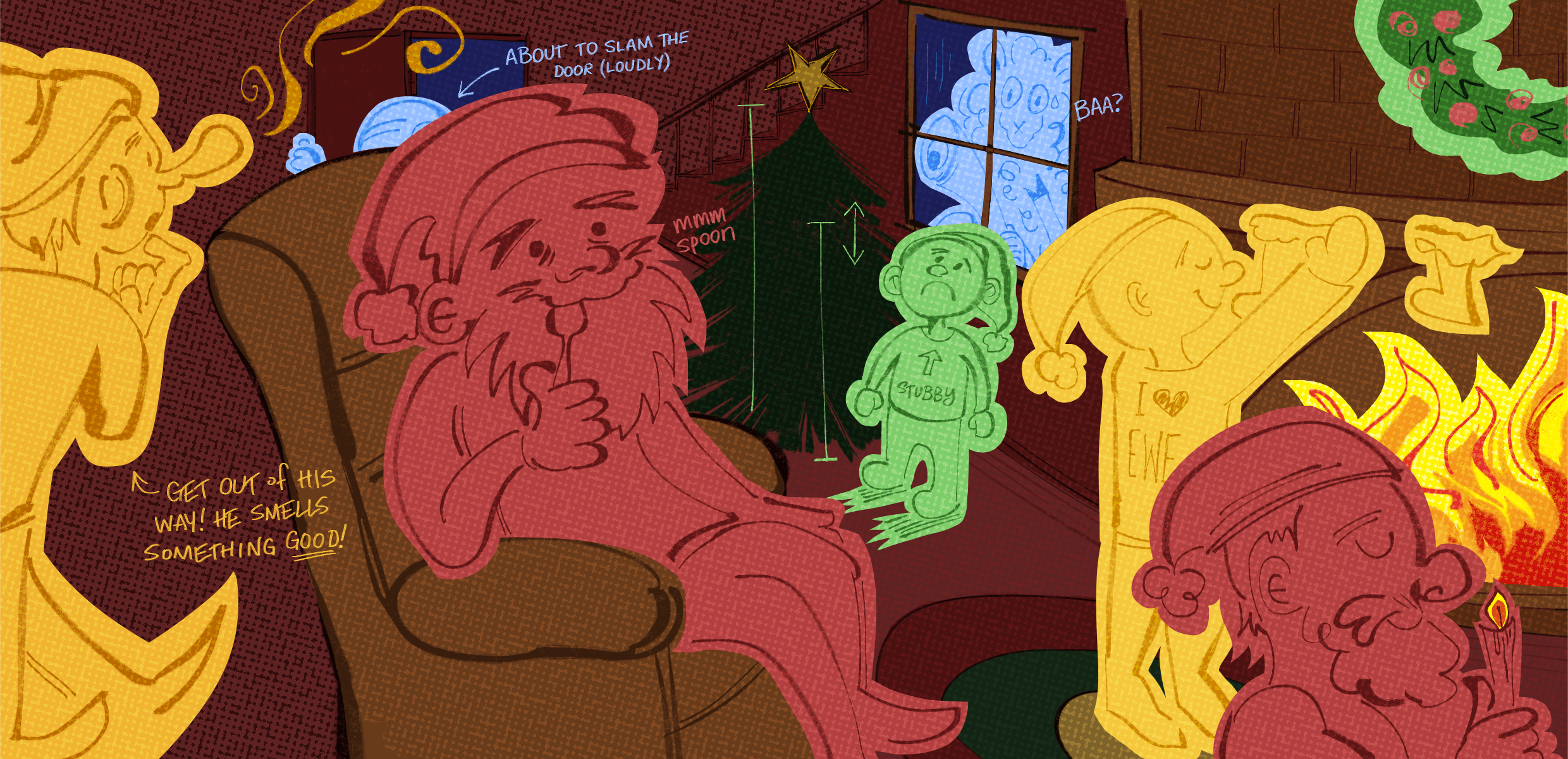
The winter season has for too long been dominated by the Christian faith. Well, it’s time for Jesus to step aside, because the Yule Lads are the new faces of the holidays. Christmas traditions already borrow extensively from Pagan rituals and practices, such as the raucous feasts of Roman Saturnalia or the frigid Yule of Scandinavia. Today Kwanzaa, Hanukkah, Krampusnacht, Eid il-Burbara, and Christmas, among other celebrations, are all held during the early winter period of December. And yet, no one is talking about the boisterous, quirky, and fascinating traditions ascribed to the 13 Yule Lads of Iceland, which take place at the same time. Through proper adoration and appreciation of the Lads, we as a society can set forth on the arduous task of separating the modern holiday season from grotesque consumerism, and instead place our ideals where they ought to be, enshrined in some goofy little spirits.
With 13 Lads to choose from, you are guaranteed to find something wonderfully exciting and different to explore for the holiday season. Just imagine it: you get to spend the entire year planning the defense of your home against the combined mischief of the Lads. Perhaps you place all of your pots in the highest cupboard and place decorative locks on it to prevent the estimable Pot-Scraper from stealing your leftovers. You make it a ritual to finish all your yogurt and dairy products before Skyr-Gobbler can arrive and eat it all. You place lights around your home to make sure there aren’t any shadows for Gully Gawk to hide in and steal your cows or milk. And, you place festive decorative candles and doorway ornaments to counter the efforts of Doorway-Sniffer or Door-Slammer. Don’t even get me started on what you could do to combat Meat-Hook. The Yule Lads provide a veritable treasure trove of inspiration for all sorts of decorations and traditions throughout the holiday season.
The first and oldest of the Lads, Sheep-Cote Clod, is said to saunter into our world with the rhythmic hammer of his wooden legs and lyrical style of speech on December 12th, and he conducts his cantankerous sheep harassment for two weeks until his departure on December 25th. After Sheep-Cote Clod, one new Yule Lad arrives each day. 12 are sneaking about on December 24th by the arrival of the final Lad, Candle-Stealer. The Lads are incredibly courteous with the modern person’s schedule, as they give over 20 days of possible chaos and celebration to choose from. You might be a person that is hesitant to change when you celebrate things, yet the Lads give you a simple solution: don’t. If you celebrate Christmas or its associated Eve, you can keep these days special by celebrating the arrival of the first 12 Lads on the 24th, and the well overdue departure of Sheep-Cote Clod on the 25th, maintaining your usual schedule. New Years coincides with the departure of Door-Slammer (good riddance), and you could incorporate some good old door slamming to inject some vitality into those end of year parties. For at least the next three years, Hanukkah will also be overlapping with the presence of the Lads. Kwanzaa is comfortably nestled in the turning point of Lad arrival and departure. And the general time frame provided by the Lads gives most people ample time to spice up their celebrations with some Yule Lad mystique.
Up until this point I have been using the translated names for all of the Lads because the original Icelandic names include Giljagaur, Ketkrókur, Hurðaskellir, and Þvörusleikir. I honestly could not tell you how to properly pronounce any of these as my mouth is incapable of making these impressive Icelandic sounds. And yet that is the beauty of the Lads, they are both ephemeral and straightforward. I know exactly what Spoon-Licker’s modus operandi is by just name alone, and the premise is so intriguing that it begs to be researched in further detail. It is like a voice in the wind calling upon me to complete some great goal, the goal of learning about the practices and traditions of a non-dominant culture. Icelandic is a language spoken by roughly 300,000 people, and while not yet endangered, the miniscule number of speakers indicates the precarious nature in which the stories and ideas of its past find themselves in. Languages such as Yakkha, Kuruba, and Dahaalik find themselves critically endangered, and with them are the tales and histories recorded in them also endangered. Institutions such as the Catholic Church spent centuries destroying everything that deviated from their narrow set of beliefs, leaving us with a small variety of things to celebrate each winter. But there is a practically infinite supply of traditions, cultures, and ideas which are buried in the past and can be repurposed for a modern world. It’s time we brought back the Yule Lads and the avant garde week-long ragers of Saturnalia to the modern world. What marvelous creations might arise from the conjunction of laddish mischief with bombastic Ancient Greek end-of-year festivities? I dare not even think of it, for it would be too great for me to comprehend. We shouldn’t let things fade away just because they aren’t popular or mainstream.
As humans we rarely have unique thoughts, since our conceptions of the world are based on the knowledge of our predecessors that has been rearranged to fit new situations. We, unlike the Greeks who originally celebrated Saturnalia, might recognize that Saturn is just a gas giant and not some narcissistic child-eating titan. But that doesn’t mean we can’t have big winter parties that encourage a shattering of the status quo. Forget about all the gaudy and drab hallmarks of our currently commercialized winter season, and instead focus on celebrating all the obscure, intriguing, and deliciously mischievous events you want to. By choosing to focus on one Lad per year, I am at least set for the next 13 years of celebration thanks to the wonderful Yule Lads. I could even bump that up to 17 if I throw in a celebration for their ogress mother Grýla who eats children that misbehave, the Yule Cat that eats those that commit fashion crimes in the winter, and the two ambiguously existent Yule sisters that put melted wax in socks. It all ultimately boils down to a simple math expression: 13 > 1. There are simply more Lads than there are Jesuses (Jesi? Jesopodes?), and as such they would easily win the winter deity fight. Wouldn’t you rather be on the winning side?

Comments